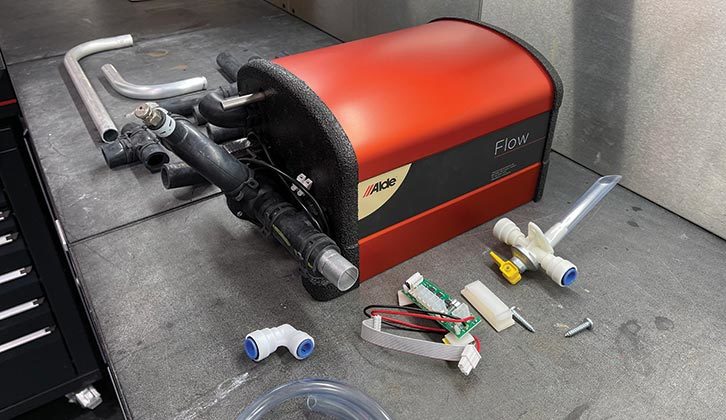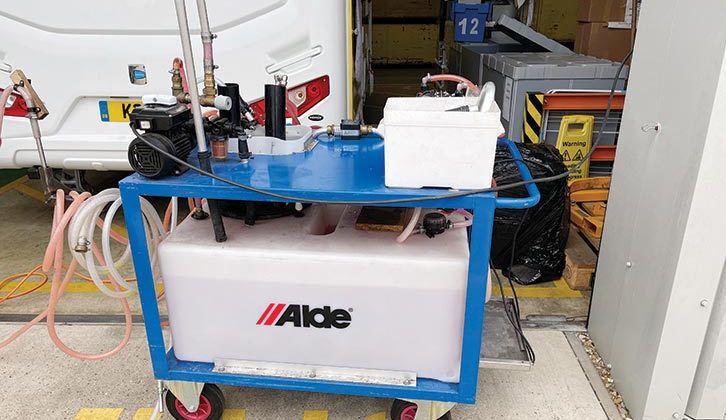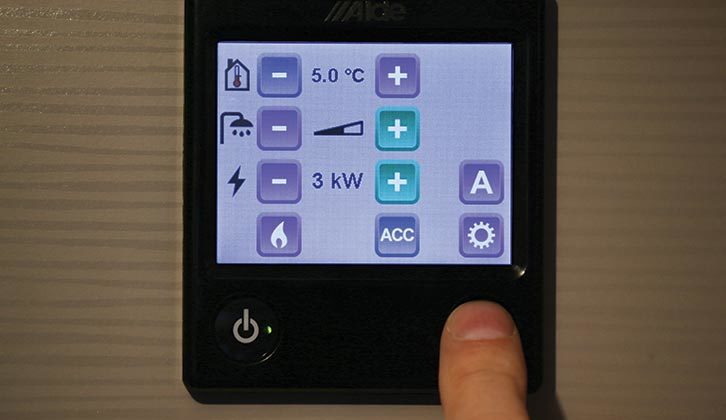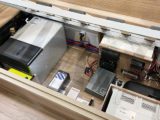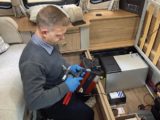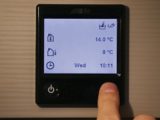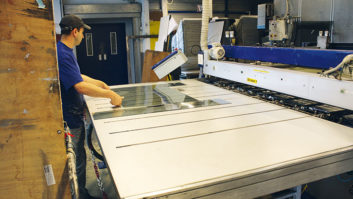The past couple of years have seen ever more people using their onboard facilities while holidaying in their motorhome.
For us, that’s nothing new, because we often stay at CL/CS campsites, and even when we visit full-facility sites, we tend not to use their amenities.
That’s not because there’s anything wrong with the site washblocks, but for us, it’s just easier to use our own shower and toilet – and after all, we’ve paid handsomely for them!
Hot water on tap
Using your own shower does put a strain on the hot water capacity and limits the length of any shower.
Although there are usually only two of us on tour, if we both have a shower and then I want hot water for a shave, I’ve often found that the water is only lukewarm at best.
That’s particularly the case if you have an older boiler system, or in the winter months, when the external water supply is several degrees colder than at other times.
If there are more members of the family all wanting to take a shower, it could be a long wait for the water to heat up adequately, even if you use the ‘Boost’ setting on the boiler.
Some campsites offer a mains water connection, which means you have an almost limitless supply (but of course we must be sensible with this), and at least that prevents the situation where water runs out halfway through a shower; but there’s still a limit on the hot water.
However, if you have the Alde heating system in your motorhome, getting continuous hot water is a possibility, if you have a Flow fitted.
This is not a DIY task, but is one of the services that Alde International UK (and some of its agents) offer.
We had a Flow unit installed in our previous vehicle and found it really useful, so we decided to have another fitted in our current ’van. As it happened, the fluid in our Alde heating system was due for replacement anyway, so it seemed sensible to have the Flow fitted by Alde at the same time.
What is the Alde Flow?
Put simply, the Flow is a pre-heater that is plumbed into the heating system and runs in tandem with the boiler. When empty, it weighs in at just over a couple of kilos.
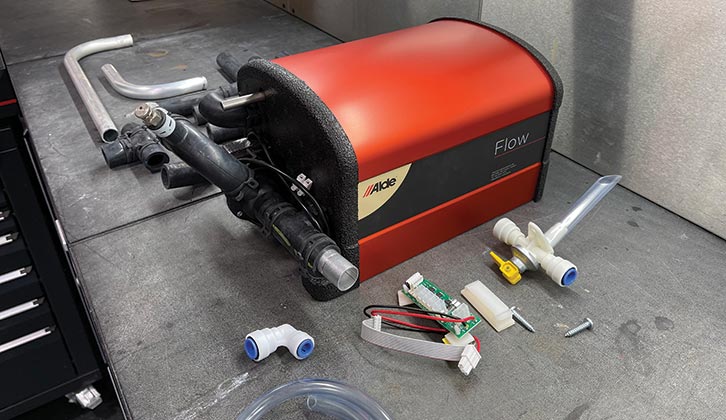
Cold water from tank passes through the Flow, which heats it to 20°C. This heated water then goes directly into the hot water boiler, which in turn heats it to at least 40°C, which should be plenty warm enough for anyone to take a continuously hot shower.
I say ‘at least 40’ because if the water in the boiler is warm to start with, the temperature at the tap will be higher than 40°, as the temperature of the glycol used to do the heating will be in the region of 70°C.
Fitting the unit
So what’s involved in fitting a Flow unit? Phil Broadbent, the Service Manager at Alde, carried out the work on our ’van. First, the system is fully drained of fluid, because various connections into the boiler will be disturbed. It’s bad enough having a clean water leak, but glycol is horrible.
With the system completely drained down, a suitable location for the Flow is then sought – and the nearer the boiler, the better. In our case, that was going to be next to the boiler, under the front sofa.

With the Flow in position, Phil then went about constructing the bespoke plumbing. He took care in making the plumbing look as aesthetically pleasing as possible and, of course, in ensuring that it would all work as efficiently as possible, too.

With the plumbing sorted out, the Flow unit was secured to the vehicle floor and its electrical connections to the boiler were attached.
That essentially took care of the fitting, and it was now time to refill the heating system with glycol.
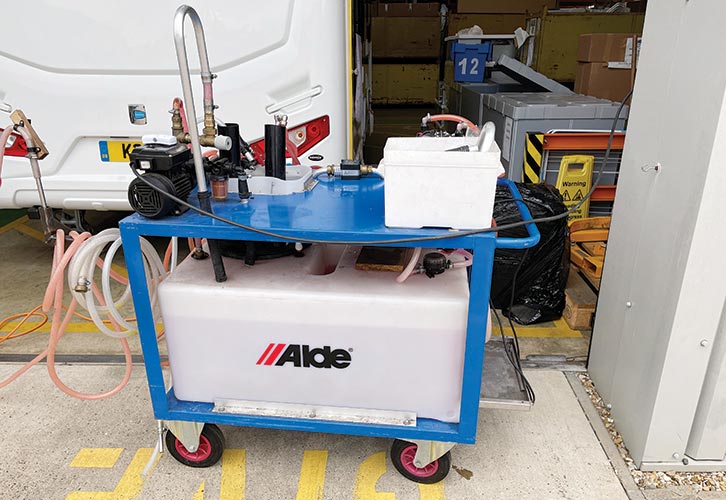
Alde has a machine designed to fill those heating systems, which pumps the fluid around them rather than simply relying on gravity. This ensures that there’s less likelihood of any air pockets forming anywhere, which can prevent the heating system from working properly.
It’s surprising how much trouble even the tiniest air pockets can cause.
Reconnect supply
With the system full of glycol, fresh water was supplied to the vehicle and the boiler filled before switching on (using both gas and electricity).
The system and control panel needed to recognise that we had a Flow fitted, which involved scrolling through the menu to ‘installed accessories’ and checking the Flow box.
With the water placed on the ‘Boost’ setting, it was only a few minutes before piping hot water was coming through the taps. Phil checked the water flow rate and judged it perfect for the Flow unit.
He then carefully checked for any potential leakage, with the system running up to temperature.
With the heating set to its highest temperature, it didn’t take long for the ’van to become uncomfortably hot (the latest 16mm pipework really has shortened the warm-up time).
The system was then turned off and the bleed valves checked.
One misconception (and I have heard some dealers say as much, too) is that you can’t have the Flow unit working when the motorhome’s heating system is off. That’s not quite correct.
If you need continuous hot water in the middle of summer, the heating can be set at its minimum (5°C), which will ensure that the internal heating doesn’t come on.
Then to operate the Flow, turn on the ‘Boost’ setting for the water and, when returning to the home screen, you’ll notice the Flow icon on the control panel will flash before coming on steady when the water in the boiler has reached temperature. At that point, provided a hot tap is turned on within 30 minutes, the Flow remains operational. It will not function when a hot tap hasn’t been opened within that 30-minute timescale.
We’re looking forward to putting the Flow unit through its paces while we are touring in the coming months.
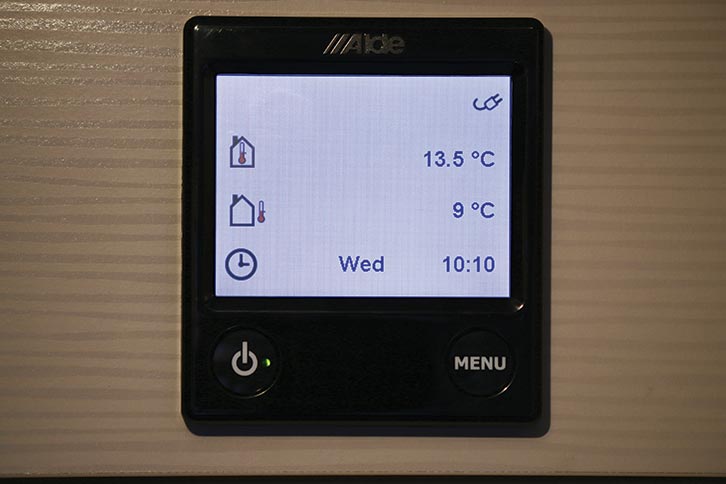



For further details, including full pricing, contact Alde International UK on 01933 677 765 or [email protected]
If you enjoyed this, why not read these:
- We take a behind the scenes look at Marquis Leisure, the UK’s largest motorhome-dealer network
- Nigel Hutson looks at an important piece of Alde boiler maintenance
Future Publishing Limited, the publisher of practicalmotorhome.com, provides the information in this article in good faith and makes no representation as to its completeness or accuracy. Individuals carrying out the instructions do so at their own risk and must exercise their independent judgement in determining the appropriateness of the advice to their circumstances. Individuals should take appropriate safety precautions and be aware of the risk of electrocution when dealing with electrical products. To the fullest extent permitted by law, neither Future nor its employees or agents shall have any liability in connection with the use of this information. Double check any warranty is not affected before proceeding.
If you’ve enjoyed reading this article, why not get the latest news, reviews and features delivered direct to your door or inbox every month. Take advantage of our brilliant Practical Motorhome magazine SUBSCRIBERS’ OFFER and SIGN UP TO OUR NEWSLETTER for regular weekly updates on all things motorhome related.
